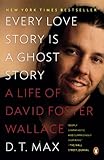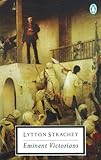
At the Edinburgh Book Festival 2011, Michael Holroyd lamented — as aging biographers are wont to do — the decline of biography. “I have a nostalgia for visiting private houses to find letters and journals and to root around in the attic,” he said. “But the fact that a lot of material now is on the computer takes the romance out of it, and now it’s about examining what lies behind the delete button — the horror.”
While his take is self-consciously crankish, Holroyd’s suggestion that the computer represents a turning point in biographical writing carries some weight. After centuries of shuffling papers, biographers must now deal with the sudden digitization of the self, and the behavioral changes that have followed. Contemporary literary biographies — of Susan Sontag, David Foster Wallace, Nora Ephron, John Updike, all of whom adopted email quite late in their lives — are petri dishes for a new age of biography.
Contemporary literature scholar Stephen Burn, who is currently editing the correspondence of David Foster Wallace, describes compiling emails as an “exercise in reverse engineering.” Since Wallace does not seem to have kept any of his emails, Burn has had to track down friends, colleagues, editors, and fans who have saved the emails he sent them. As a result, he finds himself “tracing lines backwards from published books, stories, and essays, to make visible the various dialogues along the way that led to the finished work.”
These problems are not unique to modern biographers. Papers can be lost, thrown away, or burned. But at least as far back as Cicero, writers have, with a wry wink to posterity, been careful to preserve copies of their letters. And their correspondents, whether out of sentimentality or shrewd financial planning, have stored received letters in the attic. Besides, although it’s gotten short shrift in recent years, paper is extraordinarily durable.
In contrast, what Burn identifies as “the real dark shadow cast over scholars by email correspondence” is the fickle nature of fast-changing technology. We may believe that recent history is safely tucked away in the digital fortress, but electronic content actually faces far greater threats than traditional materials like diaries, files, and letters. Whether as a result of bit rot, unstable storage devices, technical failures, or systemic obsolescence, Burn and other scholars fear that “potentially great letters or exchanges [will be] locked within hard drives that can no longer be accessed.”
However, while the digital lag may have an impact in the short-term, the practical barriers can and will be overcome. Libraries across the world are already refining their digital archiving processes, using write-blockers and advanced search tools.
The more prescient question is this: How does the rise of email change our understanding of great minds and great works. And why?
 In his end notes to his biography of David Foster Wallace, D.T. Max of The New Yorker, writes that “David may have been the last great letter writer in American literature” and that “with the advent of email [Wallace’s] correspondence grew terser, less ambitious.” Burn echoes the same view, observing that “the major difference probably stems from the more rigidly linear format of some of his emails. Some of the great letters look like spiderweb art: in these notes, Wallace has written over the top of the letter he’s replying to, with comments between the lines, spiralling into the margins, running up to headers and down to the footers.”
In his end notes to his biography of David Foster Wallace, D.T. Max of The New Yorker, writes that “David may have been the last great letter writer in American literature” and that “with the advent of email [Wallace’s] correspondence grew terser, less ambitious.” Burn echoes the same view, observing that “the major difference probably stems from the more rigidly linear format of some of his emails. Some of the great letters look like spiderweb art: in these notes, Wallace has written over the top of the letter he’s replying to, with comments between the lines, spiralling into the margins, running up to headers and down to the footers.”
The loss of handwriting, with all its eloquent untidiness, is a recurring anxiety for biographers and scholars, who have for so long relied on scratchings out, doodles, marginalia, and edits as clues to the author’s mind-set and process. Benjamin Moser described seeing in his subject’s handwriting, as one never could in an email, “how feverishly Sontag, given what looked like a death sentence when she was barely 40, sketched out the meditations on cancer that would become Illness as Metaphor.” Word processing, no matter how daring your font choice, erases individuality.
Burn also highlights that “email makes minor exchanges proliferate — procedural courtesies, note responses that probably wouldn’t have merited an actual letter.” In 2004, Nora Ephron described the six stages of early email. She traces from Infatuation (“Who said letter writing was dead? Were they ever wrong! I’m writing letters like crazy for the first time in years.”), to confusion (“Add three inches to the length of your penis. The Democratic National Committee needs you. Virus Alert. FW: This will make you laugh.”), to disenchantment (“Help! I’m drowning.”) That she was so overwhelmed by her own mail bodes ill for biographer, Richard Cohen of the Washington Post.
While letters require a commitment of time, thought, and a little money, we unthinkingly send masses of brief, entirely trivial emails. Sontag used email for less than a decade, yet the Sontag archive in UCLA includes 17,198 emails. It’s difficult to contemplate the mass of digital material that faced Steve Jobs’s biographer Walter Issacson. It’s even more difficult to envision the amount of content that will be left behind by lifelong users of computers, tablets, and smartphones.
However, although email might make the life of the researcher more difficult and less romantic, we should be wary of mistaking different for worse.
In 1969, Foucault asked whether, if an editor found a laundry list jotted down in Nietzsche’s notebook, it should be considered a work or not. Similarly, should an email that has clearly been written with little thought to style be valued differently to an elaborately crafted letter?
Max may regret that Wallace’s writing became terse when he used email, yet it surely casts light on the life and work. It could be that Wallace, as he lapsed back into the depression that eventually killed him, simply didn’t want to write more effusively. Or that in emails he didn’t feel the same obligation to cloak his feelings in craft. Whatever the reason, clearly the expansive and carefully-wrought writing of Wallace’s novels did not come entirely naturally.
For many others, however, email is a light-hearted form. Benjamin Moser highlights his delight at realizing “that Sontag sent e-mails with the subject heading ‘Whassup?’”
But is this more than an endearing quirk? Hermione Lee, biographer of Virginia Woolf, Edith Wharton, and most recently Penelope Fitzgerald, suggests that “when people are at their most frivolous, superficial, gregarious, and chatty is often when they are most revealing about themselves,” highlighting the interplay between “your secret self, your solitary self, your nighttime self, your gregarious, chatty e-mailing self.”
What does it tell us about the “Dark Lady of American Letters,” that following a career largely dedicated to war, illness, and exploitation, she was playful, tender, slightly wacky in her emails? Moser highlights that she was lonely in her last years, and was “elated to be in such easy touch” with her friends. Yet acquaintances she emailed seemed unsure of how to interact with the iconic critic on such casual terms. Do the emails reinforce what one already suspects from Sontag’s prolific diary-writing; that her intellect and reputation prevented her from receiving the love and tenderness she craved?
 The task of the biographer is to answer questions like these, with whatever sources are available. Lytton Strachey, who carried the genre from the stodgy tomes of the 19th century to the insightful explorations of the 20th, suggested in his preface to Eminent Victorians that the good biographer can “row over that great ocean of material, and lower down into it, here and there, a little bucket, which will bring up the light of day.” The rise of the e-mail may generate a host of practical and technical challenges, but the art of biography, as cherished by Holroyd, need not suffer as a result.
The task of the biographer is to answer questions like these, with whatever sources are available. Lytton Strachey, who carried the genre from the stodgy tomes of the 19th century to the insightful explorations of the 20th, suggested in his preface to Eminent Victorians that the good biographer can “row over that great ocean of material, and lower down into it, here and there, a little bucket, which will bring up the light of day.” The rise of the e-mail may generate a host of practical and technical challenges, but the art of biography, as cherished by Holroyd, need not suffer as a result.
Image Credit: Flickr/greggoconnell









